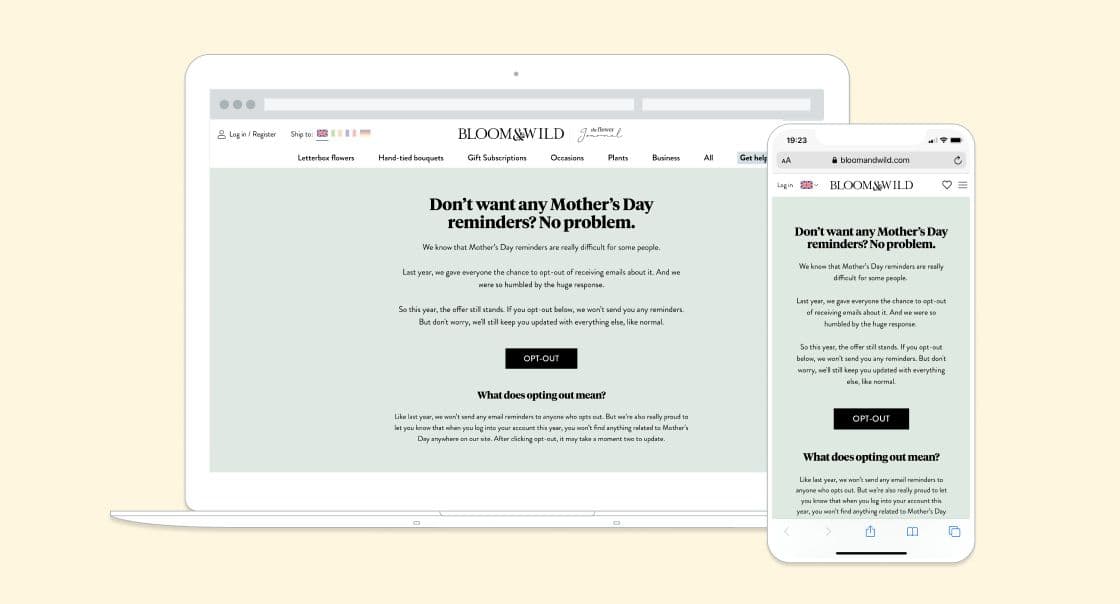Building Empathy Into Your Messaging With Thoughtful Brand Guidelines
Published on November 13, 2020/Last edited on November 13, 2020/6 min read


Casey Dienel
Senior Copywriter, BrazeWords matter. You’ve heard the phrase before, but this year it feels even more resonant. Words hold power. They have the ability to make us feel comforted, understood, and cared for. They can incite us to take action, offer encouragement, or warn us against danger. Then there’s the flipside: The fact that words can produce anxiety, cause distress, or make us feel sad. What we say, and how we say it, can have an enormous impact on our ability to connect with our desired audience—or to alienate them.
All too often, we learn just how much words matter when something goes awry. Remember that time you sent out a company-wide email where you misspelled the CEO’s last name? (Eek!) We’re all human, and mistakes happen. But in today’s landscape, brands face even more pressure to get it right, with increasingly more touchpoints for reaching their customers. Whether your company has 30 employees or 3,000, a style guide enables multiple contributors to write under the banner of your brand. That content might include blog posts, whitepapers, and communications like push notifications, Content Cards, or SMS. It could also encompass in-portal support messages, email outreach, or external advertising. Basically, if you’re publishing it on the internet, it’s safe to say you’ll want to lay down some ground rules when it comes to the words you use.
The Importance of Brand Guidelines
If a cohesive experience at every touchpoint is our true north, brand guidelines are the route we take to get there. When we set out to create the Braze Content Style Guide, we faced a number of challenges. We needed to be able to reach a vast range of audiences, regions, and awareness-levels of our platform—without sacrificing style or consistency. We needed those guidelines to be both scannable and comprehensive. We also needed to establish parameters to ensure anyone writing on behalf of Braze could do so easily, at any level of writing experience.
We set out to nail down our voice first. Every brand has its own unique voice, defined by how they communicate with their customers. Case in point: A streaming media platform that’s out to challenge the status quo might adopt an irreverent voice to show while they take their product seriously, they’re here to entertain their customers. Conversely, a healthcare service might adopt a helpful voice to show they’re there to resolve their customers’ health concerns. Effective brand guidelines are engineered from the ground up to put a premium on the customer experience. Baking this customer-centricity into your content strategy is insurance against potential gaffes that could arise at the user’s expense, particularly as you expand your reach across various channels and verticals.
Now, to ensure that your voice shines through, you’ll also need to map out where the tone of your brand voice shifts. Think of it this way: Each of us has a primary voice we use day in and day out; tone is where our words can and should vary. You probably wouldn’t speak to your oldest friend the same way you’d address an insurance claims adjuster, and that’s a good thing. Shifting our tone is a sign that we’re listening and taking others into account. That’s why we ask that all our writers to take into consideration who their audience is, where they’re located, how familiar they are with Braze, and what’s their likely state of mind.

For instance, for a marketer experienced in building customer journeys using our Braze Canvas feature, we wouldn’t want to frontload those communications with definitions of terms they’ll already recognize, like multi-step campaigns or Liquid personalization. We’d also want to keep the writing as concise as possible, since we know that person is likely very busy and has lots of tasks to get to during their workday. We design our content by first considering how the person on the opposite end might receive it, and in some cases this has completely changed our strategy for communicating with them. Keeping that front of mind consistently has led us to an improved user experience.
Building a Style Guide
But standards go well beyond voice, style, and whether or not your brand embraces the Oxford comma. If you really want to get it right, there’s no better resource for building an effective style guide than your own employees and customers. As we designed ours, we reached out to different teams for their feedback. What style issues were they confused by? Where did they feel support was lacking? By doing so, we were able to design guidelines that empower them to talk about Braze more confidently and accurately. In fact, more often than not, the places where we were inconsistent turned out to be the best opportunities for improvement. I can’t tell you how many times a week people Slacked me to ask if “real-time” should be hyphenated or how to identify the passive voice; now they have a comprehensive glossary of terms at their fingertips and a run down of active voice examples. This is what style guides do best: Provide clear guidance to make sure everyone is equipped to put their best foot forward, without interrupting the customer experience.
Lastly, building flexibility into these guidelines early on is essential. A style guide is a living document (just check out the AP Style Book on Twitter for proof). As your brand grows and evolves, you can expect that your style guide will follow suit. Once upon a time email was hyphenated, and the jury’s still out on whether it’s “e-commerce,” “ecommerce,” or “eCommerce.” You’ll constantly encounter avenues you overlooked. Embrace it! I recommend baking in quarterly reviews of your style guide to make sure it’s in alignment with current business goals. Evolution is an indicator of a healthy brand, and change is a natural extension of scaling upwards.
Final Thoughts
What started out as a style guide for the Content team has since expanded to encompass other teams at Braze in their writing efforts. We’ve also taken steps to build further inclusivity into our writing, taking our cue from resources like the Diversity Style Guide. Our glossary continues to grow, and since its launch, we’ve added examples of Dos and Don’ts to reduce guesswork. Turns out when we all know where we need to go, collectively we travel much faster.
To learn more about how to make every word count for your brand, check out the Brand Humanity Study.
Related Tags
Be Absolutely Engaging.™
Sign up for regular updates from Braze.
Related Content
View the Blog
The new inbox reality: How iOS changes are reshaping email marketing

Aparna Prasad

Experience optimization: Turning data insights into better journeys

Team Braze

December 2025 Bonfire Marketer of the Month: Jagex’s Emma Oliver
